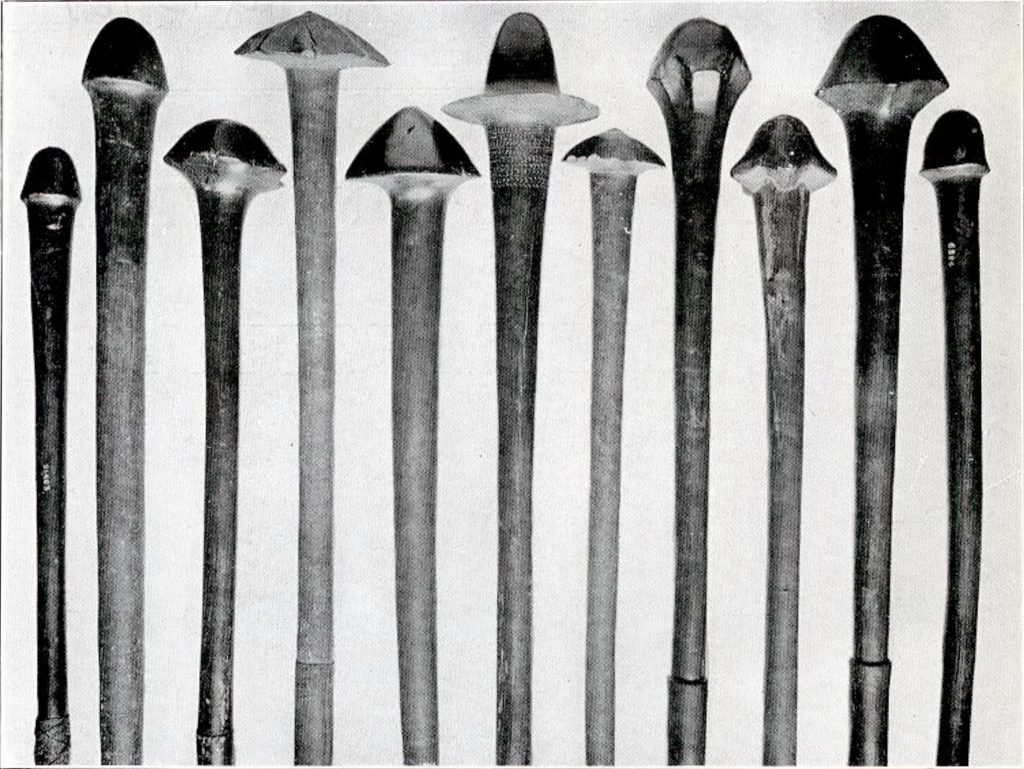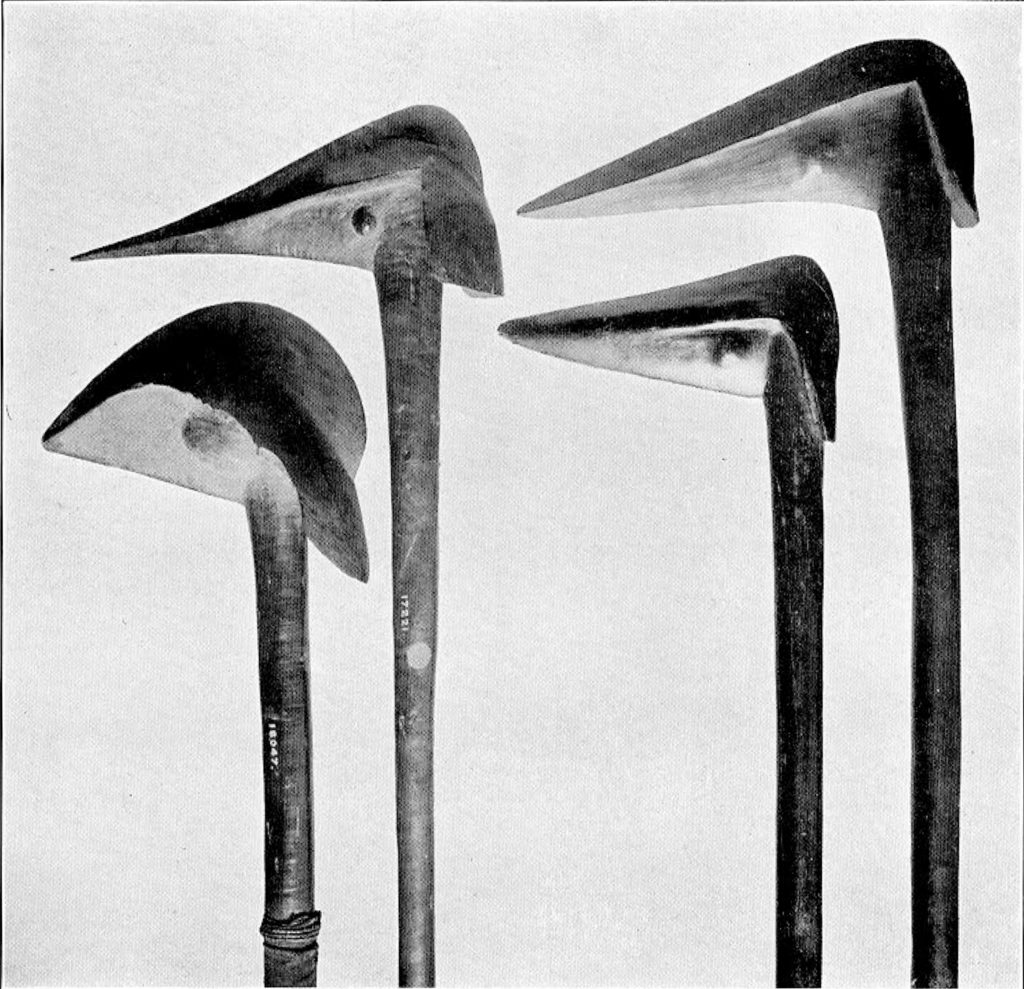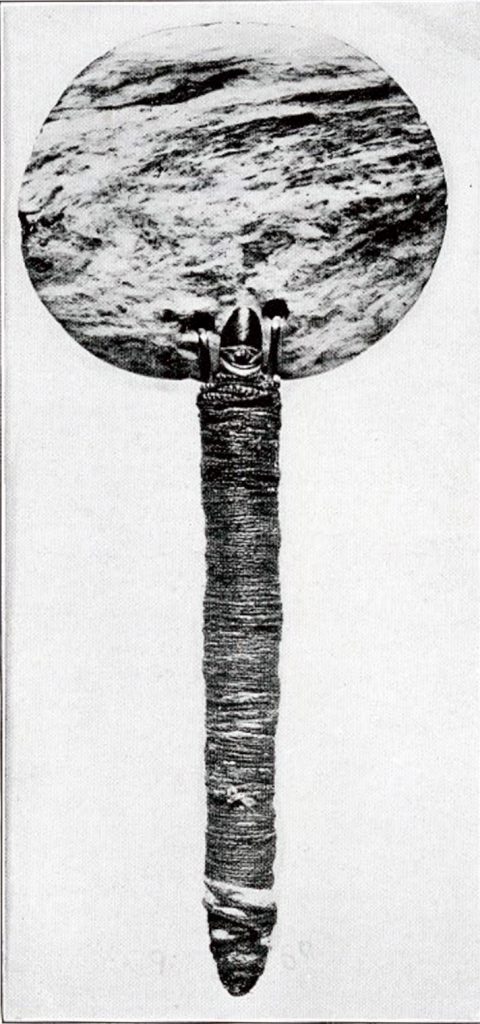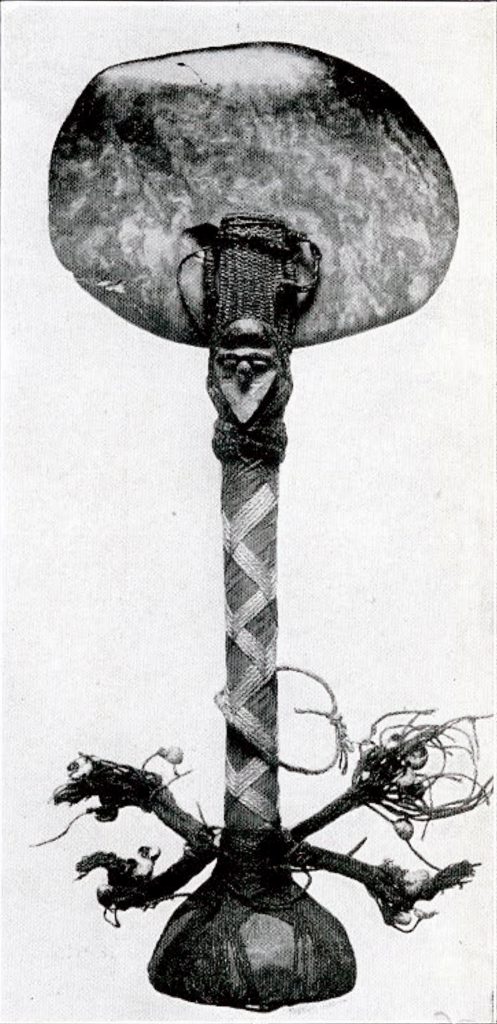New Caledonia
Melanesia is the name given to a group of islands in the South Pacific lying directly to the west of Polynesia. The inhabitants of Melanesia differ both in culture and in physical characteristics from the Polynesians, some of whose productions were described and illustrated in the last number of the Museum Journal.
New Caledonia is an island in Melanesia lying very close to the Polynesian line, and from early times the Samoans and Tongans (Polynesians) have paid it frequent visits. It is therefore no wonder that their cultures are greatly intermixed but much more surprising that very few of the delicate Polynesian carvings have invaded this area, and also, that the picturesque crudeness of the Melanesian decorations is rare in Polynesia. Their tools and materials were the same. The Melanesians as well as the Polynesians had no metals, and both had their chief material in the tough woods so plentiful on their isles.

Museum Object Numbers: P2294 / P2293 / P2297 / P2301 / P2299 / P2302 / P2300 / P2295 / P2298 / P2296 / P2292
Image Number: 233
Captain Cook was the discoverer of the New Caledonian islands, the French explorer d’Entrecasteaux completed the exploration of them, and it is from him that we have the first information about the inhabitants. They were a warlike people. George Turner, who lived in the South Pacific for a great many years, tells us that in New Caledonia war was the rule, peace the exception. It was therefore no wonder that life and customs were to some degree imbued with ideas connected with war.
When a boy was born the priest cut his umbilicus on a stone from Lifu that the youth might become stone-hearted in battle, and before him he held a bowl full of a black fluid, that the boy might became courageous and go to battle on pitch-dark nights. Thus from the very beginning the little fellow was consecrated to war. Later he was trained to fight. Boy fought with boy, and learned to discern the approach of an enemy at a great distance by listening to the earth. When he finally grew up and became a warrior he was cruel beyond measure both towards enemies and towards those of his own upon whom he had opportunity to visit punishment.
When a New Caledonian was publicly condemned for some misdemeanor he was clad with garlands of red flowers. On his legs and arms were hung shells and blossoms, his face and body were painted black and blue and he had to dash forward, jump over the rocks into the sea, never more to appear.

Museum Object Numbers: P2303 / P2304 / P2305
Image Number: 232
But especially towards their enemies the New Caledonians had great opportunities to exercise brutality, because there were, as Turner says, “Wars, wars, wars, incessant wars!” They fought with clubs, spears, and slings, and no life was spared. Judging from the old reports the people of these islands must have been among one of the peoples on earth who actually enjoyed human flesh. A captive they tied to a tree, and before his very eyes they dug the hole and kindled the fire which a minute later would transform his body into a meal. The women went along to battle, and it was their duty to rush forward, when an enemy fell, to pull his body to the rear and prepare it for the oven. When a chief was roasted everybody had to have a taste of his flesh, even the little children. The hands were the choice bits, and they were sacred to the priests who sat at a distance and prayed for victory, and fasted, if they could not get sufficient hands

Image Number: 230
White men, the New Caledonians said, were the spirits of the dead; they were supposed to bring disease and death, and to kill them was particularly desirable.
Also in their prayers their warlike spirit showed itself. Before going to battle they prayed to one god for the eye, that they might see the spear as it flew towards them; to another for the ear, that they might hear the approach of the enemy, and to a third for the feet, that they might be swift in pursuing the enemy; for the heart, that they might be courageous; for the body, that they might not be speared; for the head, that they might not be clubbed, and so forth. The greatest desire of a New Caledonian was to be praised as a great warrior, and finally when he had ended his earthly career, spears were set at his head, a thrower fastened to his forefinger, and a club laid on top of his grave, so as to be sure that he should not want weapons in the battles of the next world.
Coming from a people whose whole life was so entirely filled with ideas of killing it is no wonder that we find clubs and axes primarily suited to this purpose and in which the matter of decoration has become secondary. In Fig. 56 we see a row of New Caledonian war-clubs with well-rounded handles, excellently suited for a good grip, with heavy heads suggesting fatal blows, but almost entirely void of decorations. Also the picks, Fig. 57, are primarily made for a practical purpose. They are shaped like the head of a heron or crane and were used for both war and husbandry. Among the inhabitants of Loyalty Islands the same kind of weapon was used, and it is hinted, that it there served a special purpose which may not have been foreign to the New Caledonians. The Loyalty Islanders practised incision of the scalp as a cure for headaches. They slit open the scalp, scraped the cranial bone till they reached the brain, let a few drops of blood escape, hoping to “let out” the pain, and then closed the aperture with a sea shell or cocoanut shell and let it heal. But ever after, this formed a. weak point on the skull, and it is intimated that this birdlike weapon was shaped so as to be able to give the most deadly blow on the weakest point.
These objects are beautifully polished and all have a decorative eye, which helps to suggest a realistic origin. The ceremonial axes shown in Figs. 58, 59 have characteristically crude human head carved at the point where blade is fastened to handle. The blades are large pieces of beautiful green jade. The handle of the one is wrapped with flying-fox fur braid, which was used extensively as currency. The other is wrapped with sennit (cocoanut fibre) and at the bottom is half a cocoanut shell fastened with flying-fox fur braid and containing shells or beads which rattle with the smallest motion.
Also the beads in Fig. 60 are made of green jade. Each bead is hand carved with tools of stone and wood, and represents a huge piece of work. They were used as a necklace and the string contains 166 beads.
Gerda Sebbelov



